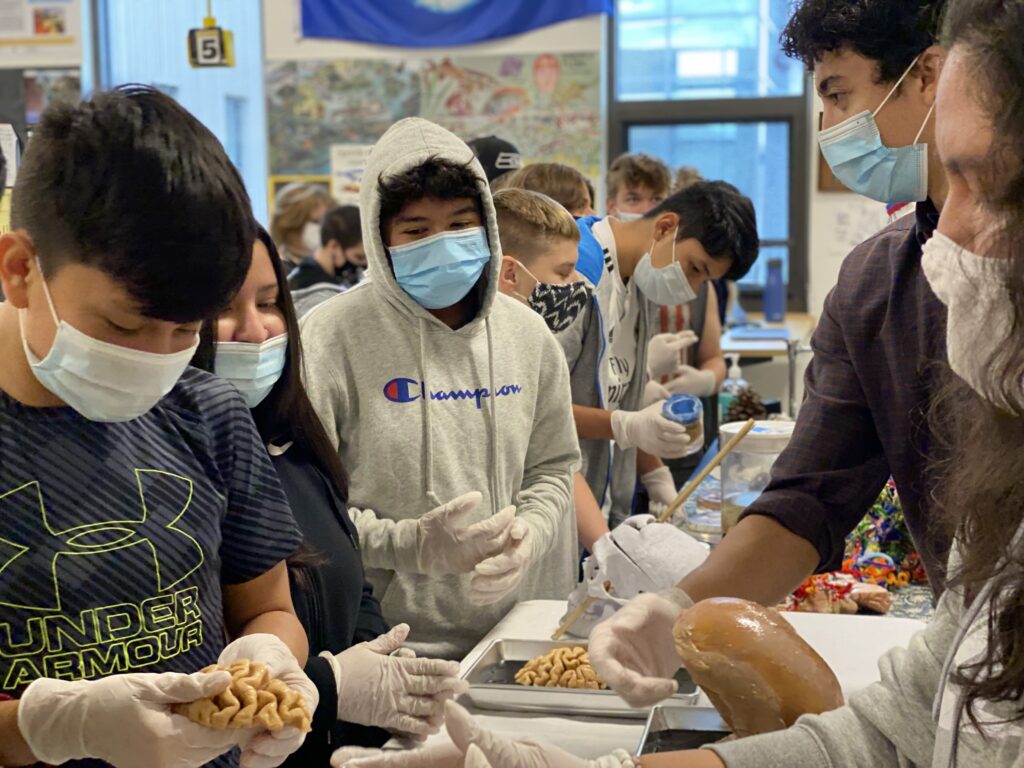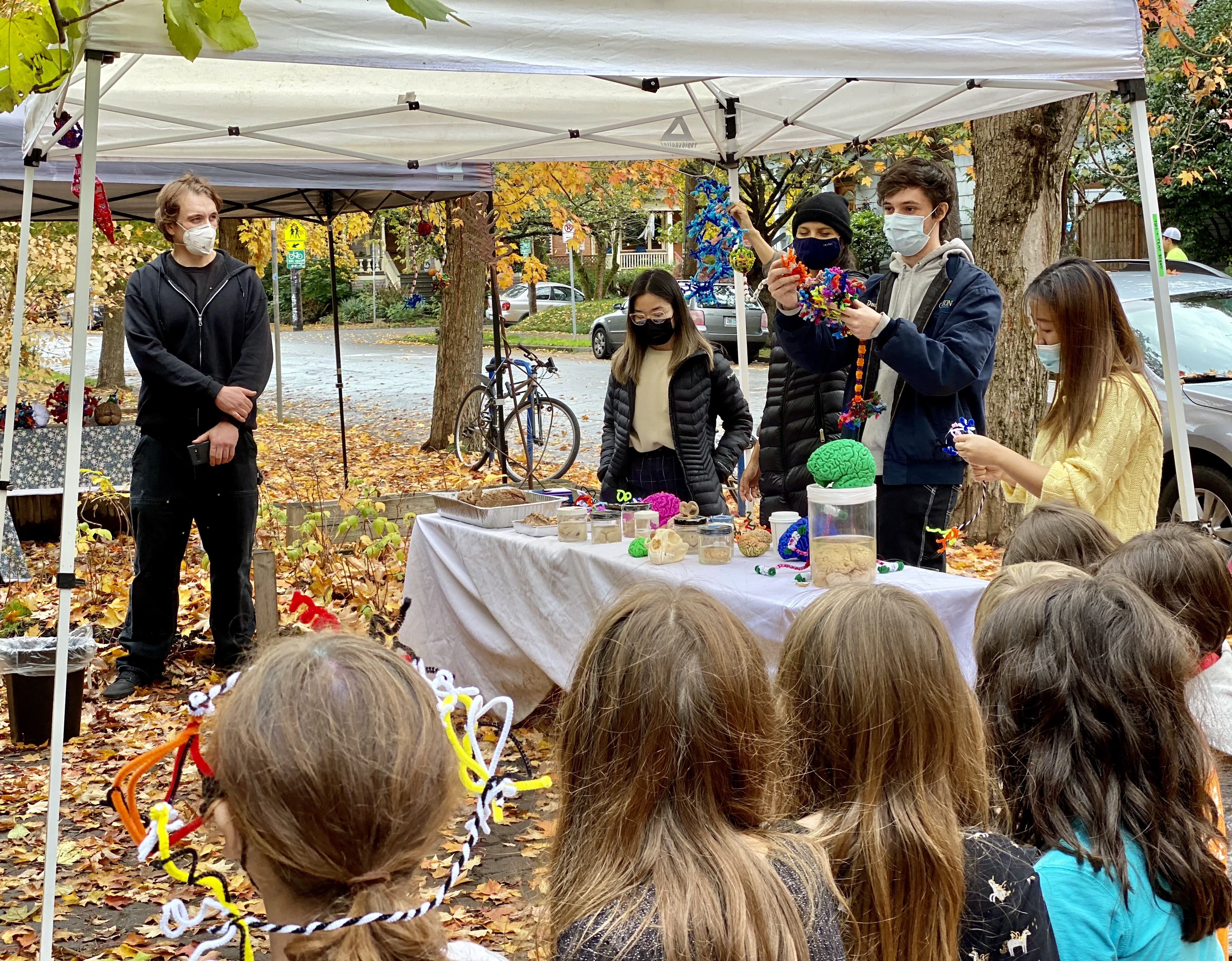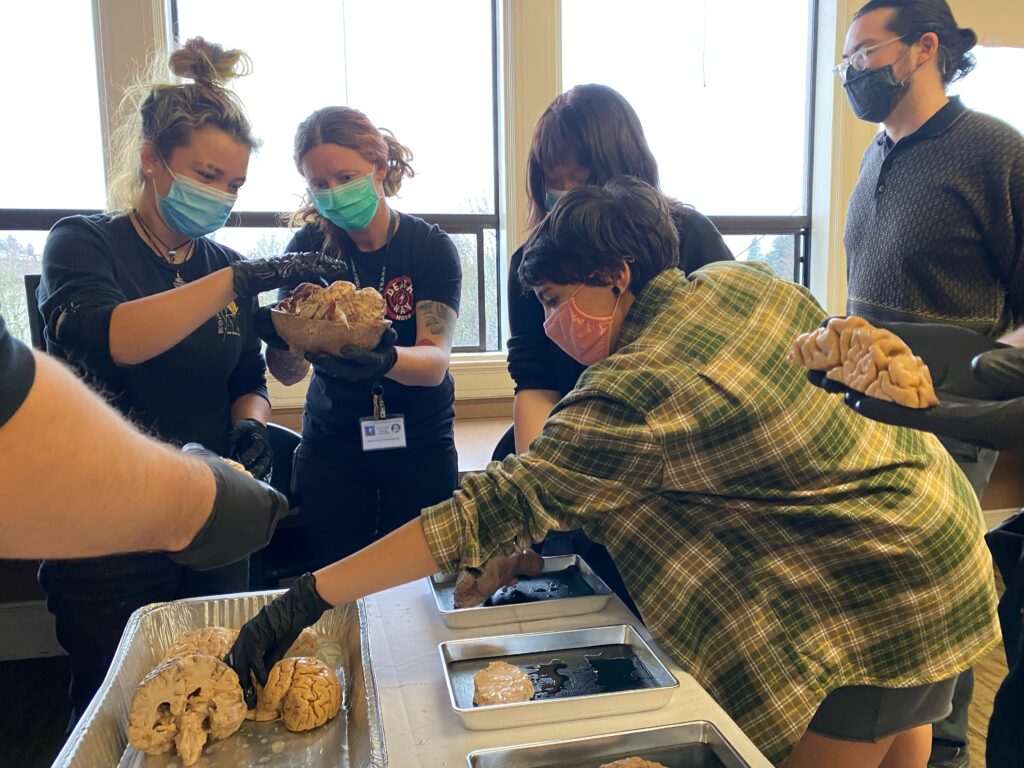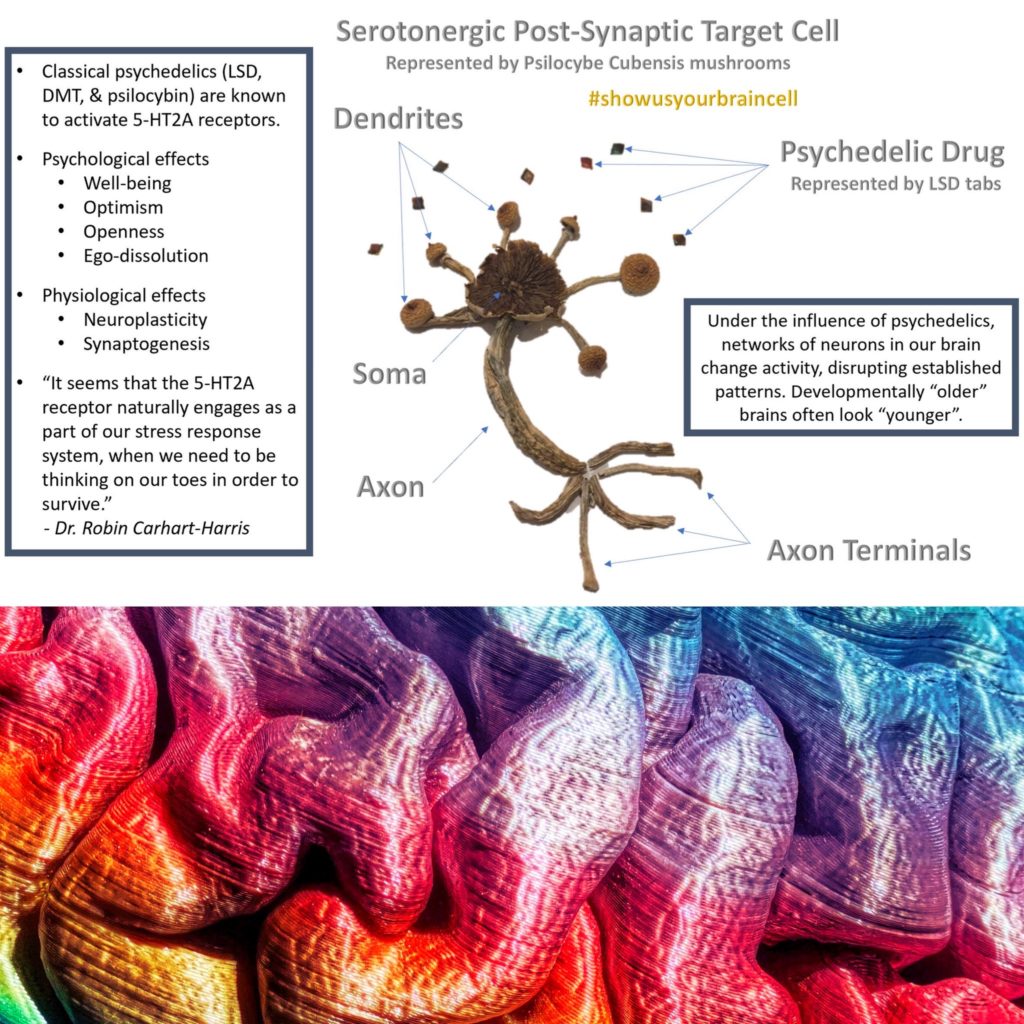“Alone we can do so little; together we can do so much.”
– Helen Keller
By: Larry R. Martinez, Faviola Robles-Saenz & Bill Griesar
What’s the difference between a university professor and a social media influencer?
In reality, there are quite a lot of differences. But imagine a world where that wasn’t the case. Higher education has a long and important history of employing remarkably brilliant scientists, authors, performers, and creators to teach future generations everything they know – typically through lectures, textbooks, and assignments. These people know what they’re talking about, but aren’t really incentivized to think of ways to make their knowledge understandable – let alone entertaining – to the lay public. Indeed, except for Indiana Jones (who was a professor of archaeology), most professors are depicted in TV and movies as obstacles to fun whose primary flaw is that they are boring.
On the other hand, social media, by its very nature, is fun and engaging. Cats; babies; and people falling down, eating spoonfuls of cinnamon, or dumping buckets of ice water on their heads is (sometimes!) just more fun than learning about the latest scientific discoveries or considering the literary commentary provided by the latest (or ancient) drama. Although that may be the case in a lot of situations, we think it’s not because what people learn at universities is inherently boring – it’s just usually presented in a boring way. On top of that, only certain people (i.e., people enrolled in college) typically have access to this information.
LEARN MORE: Magnifying Your Messaging (from the NIH)
Science is largely inaccessible (due to actual lack of access through journal subscription paywalls or scientific language) and (b) the people making science happen are generally not incentivized to make efforts to make their work more accessible to the lay public. Researchers at universities typically don’t get encouragement or support for taking the extra effort to translate their work in ways that people can understand and get those translations (if they existed) out to the general public.
However, we highlight one potential remedy that most researchers don’t think about: leveraging the talents of undergraduate psychology students to help make their discoveries more understandable and more accessible to the rest of us.

Why Welcome Undergraduate Students to Help Introduce Research?
Undergraduate students are beneficial in sharing science to the public for many reasons. One of the most obvious benefits of inviting undergraduate students to help with research dissemination efforts is that there are a lot of them. Like many other institutions, psychology is the most popular major at Portland State and our classes are filled with students from other majors who are hoping to expand the breadth of their education. Many of them are enthusiastic and want to be involved with projects outside of the classroom and to begin contributing to the field in meaningful ways.

In addition to their enthusiasm and desire to explore this science, these students are, on average, more well versed in the types of media that most people enjoy consuming anyway. A large number of these students are aware of trends, engage with their followers, and stay up to date with social media. For example, the growth of TikTok has made people, specifically younger generations, engage with social media in a new and creative way. These students are active participants in engaging with larger audiences through Instagram, Reddit, YouTube, Twitter and other forms of social media. They are tech savvy and provide a unique perspective on how to connect with others in ways that many researchers may lack understanding of.
Not only do these students know how to manage and participate in different types of media, they also can be, in fact, extremely talented. Many of them have skills in graphic design, artistic and/or musical skill, community organizing experience, and writing ability. One of their important skills is that they know how to communicate with others. These students bridge two woefully distinct social spheres: the lay public and the scientific community. They understand the technicality and terms of our science but are also able to translate that and share with others so that it is easier to digest. The combination of these skills and their passion for psychology provides new avenues for sharing our science to the public in a way that is up to date and engaging.
These students may also be well connected. Most of our students at Portland State have families, coworkers, friend groups, and other social circles that are influential. Some of them may even have large followings on social media of their own. Undergraduate students’ lives are certainly busy, although they may have different responsibilities and experience than some researchers/professors. Additionally, given their skills and enthusiasm for the science, they want to be a part of this community and help faculty members and their labs. In providing them roles to help share our science to the public, these students can gain their own connections as public liaisons of the work. This provides them documented experience and exposure that can be attractive in future applications to graduate school or employment3. They are also able to practice their skills in new and challenging ways.
Special Considerations for Undergraduate Students Engaged in Research Dissemination
Although our primary argument is in favor of using undergraduate research assistants for help with research dissemination, this practice comes with a few caveats that we feel are important to highlight. First, many research labs continue to operate such that student research assistants volunteer their time in exchange for experience, knowledge, and the promise of a strong letter of recommendation for admission to graduate school or for other future career plans. Ideally, all workers would be paid a fair living wage for their time and energy. Furthermore, students with marginalized identities/characteristics or from low socioeconomic backgrounds may not have the capacity to engage in unpaid volunteer work to the same extent that more privileged students may be able to. As such, we encourage researchers to procure means of supporting students financially or finding other means of compensation. They can support undergraduate students through small internal (university- and college-level) grant and professional development opportunities. These funds can have a relatively large impact given that these students are typically paid hourly wages that do not include benefits.
Second, it is important to keep in mind that the primary purpose of working or volunteering in research labs is to gain practical research skills. Although we maintain that dissemination is a critical aspect of the research process, research assistants should also be learning skills related to conducting literature reviews; working with references; creating stimuli; collecting, transcribing, coding, and managing data; and helping with writing for more scientifically-targeted audiences (i.e., peer-reviewed journals and conferences). As such, we caution against putting students in situations in which they focus completely on dissemination and have not gained the typical knowledge that would be expected from a research assistant, particularly if their future plans include applying for competitive graduate school programs.
Third and finally, researchers must work to ensure the integrity of the content that students create related to their work and their reputations. Even simply creating and maintaining a plan for research dissemination including the scope of the content, the type of media, the timing of posts, and the target audiences takes considerable time and energy. More experienced undergraduate or graduate students (if available) can help with these high-level administrative tasks, but principal investigators are of course ultimately responsible for what is created under their banner.
Examples from our own experience
In the first author’s own lab (an I/O Psychologist), we have just begun to utilize undergraduate research assistants for social media outreach. Our lab has had a Facebook page for several years, but no one had posted in several months and in our most active periods we never posted more than infrequently. However, this academic year we created a research assistant role that is dedicated to managing this page (in addition to other typical research responsibilities). Now, a quick email asking for “something in honor of the upcoming Trans Day of Remembrance; we can highlight some of our own work about trans employment experiences” results in a timely post (Stoker, 2021) a few days later acknowledging the atrocities that individuals who are transgender experience across the world, the importance of being able to live authentically, and a call out to some of our past work that speaks to these issues. The following for our page is currently small, but we are optimistic about the impact these types of posts may generate in the future.
LEARN MORE: DASH Lab @ Portland State University
The third author, however, is perhaps the best exemplar for leveraging the talents of undergraduate students for research and knowledge dissemination to broad audiences. For context, this author is a behavioral neuroscientist by training and is a full-time, non-tenure track instructor in our department. His formal responsibilities are primarily related to undergraduate teaching and mentoring, but his contributions beyond these requirements will soon be evident. Specifically, in addition to teaching nine undergraduate courses in cognitive neuroscience and related topics, he is the faculty advisor for an undergraduate club for those interested in careers in neuroscience (on Instagram @pdxbrains). The club is extremely active, boasting a newsletter distribution to 350 past and current members. This author also has extensive and intensive partnerships with local and national community and educational organizations. Complementing these activities, this author has also established a nonprofit organization (nwnoggin.org) dedicated to educating child and adult learners about neuroscience (e.g., bringing volunteers, as well as real and 3-D printed brains to K-12 classrooms, shelters for homeless youth, and prisons, among other public venues). NW Noggin outreach also involves making art, including pipe cleaner brain cells, and this interdisciplinary approach has inspired a large cadre of undergraduate students passionate about neuroscience, and also about listening, learning from, and sharing brain research with others in relevant and practical ways that connect with people’s lives (e.g., the neuroscience of music, yoga, and meditation).
LEARN MORE: Noggin Bloggin
Each of these community-focused education activities is accompanied by some type of documentation of the interactions through blogs, podcasts, social media posts, instructional videos, press releases, and/or website updates. Specifically, this author has documented over 400 such community engaged educational activities (Griesar, 2021). These efforts have substantial impact, as evidenced by NWNoggin’s more than 3,000 followers on social media, who actively further disseminate the original content.
Importantly, these resources are enthusiastically created by undergraduate students themselves. As one example, a student leader posted a timely blog post that discusses the negative cognitive and social consequences of the COVID-19 pandemic (and other current events) and highlights how sexual orientation and gender identity minority populations are disproportionately at risk for such consequences (Leister-Gray, 2021).

LEARN MORE: Internet, Music, and Activism During Crisis — LGBTQ Communities in 2020
The post is thoughtful, comprehensive, and data-driven; it links out to numerous other resources for readers to gain more information about topics raised and even includes original artwork that depicts infection rates over time by the student author. This student author’s perspective and passion are evident throughout the post, which brings the topic to life more so than our field’s typically dry scientific writing style. It highlights how passion and creativity are not at odds with data-driven knowledge (though they are often assumed to be at odds; D’Ignazio & Klein, 2020).

A similar post co-written by several undergraduate students discussed research related to the recent advisory on Youth Mental Health issued by the U.S. Surgeon General; (Griesar et al., 2021). Another student wrote a blog describing how psychedelics impact brain function (Oregon was voting on approving psilocybin treatment at the time (Eisen, 2019)); another described what it is like to witness a live brain surgery (Kiersarsky, 2019); and another (a high school student!) described his experience building and learning to ride a “reverse” bicycle with an accompanying discussion of neuroplasticity (Armstrong, 2019).

LEARN MORE: What is brain surgery like?
LEARN MORE: It’s Just Like Riding a Bike…Except It’s Not!
Several of these posts are also provided in other languages, having been translated by students for dissemination to non-English speaking audiences.

What is obvious from these posts is that they are centered on topics that are both extremely relevant with respect to current events and driven by students’ own passions and experiences. This makes the content not only interesting but also fun to read.
In conclusion, we hope that the principles we have outlined related to including undergraduate students, the caveats for doing so, and the examples from our own experiences are helpful in inspiring other researchers to empower their students and help spread their knowledge in more accessible forms.
References
Armstrong, L. (2019, December 21). It’s just like riding a bike…except it’s not! NW NOGGIN: Neuroscience outreach group (growing in networks). https://nwnoggin.org/2019/12/21/its-just-like-riding-a-bikeexcept-its-not/
D’ignazio, C., & Klein, L. F. (2020). Data feminism. MIT Press. https://data-feminism.mitpress.mit.edu/
Eisen, A. (2019, December 30). Psychedelic Portland. NW NOGGIN: Neuroscience outreach group (growing in networks). https://nwnoggin.org/2019/12/30/psychedelic-portland/
Griesar, B. (2021, December 28). Noggin bloggin. NW NOGGIN: Neuroscience outreach group (growing in networks). https://nwnoggin.org/outreach-opportunities/
Griesar, B., DeGeneres, T., Zavala, J., Skalbeck, S., Harbury, B., Phanphackdy, A., Mutschler-Aldine, S., & Garner, G. (2021, December 11). An axonal alliance. NW NOGGIN: Neuroscience outreach group (growing in networks). https://nwnoggin.org/2021/12/11/an-axonal-alliance/
Kiersarsky, S. (2019, January 22). What is brain surgery like? NW NOGGIN: Neuroscience outreach group (growing in networks). https://nwnoggin.org/2019/01/22/what-is-brain-surgery-like/
Leister-Gray, D. (2021, April 16). Internet, music, and activism during crisis – LGBTQ communities in 2020. NW NOGGIN: Neuroscience outreach group (growing in networks). https://nwnoggin.org/2021/04/13/internet-music-and-activism-during-crisis-lgbtq-communities-in-2020/
Rodelberg, S.G., King, E. B., Alonso, A. (2022). How can we bring I-O psychology science and evidence-based practices to the public. Industrial and Organizational Psychology: Perspectives of Science and Practice, (15)2. Stoker, A. (2021, November 20). Happy trans day of remembrance. [Status update]. Facebook. https://www.facebook.com/291098088144362/posts/971813173406180/


